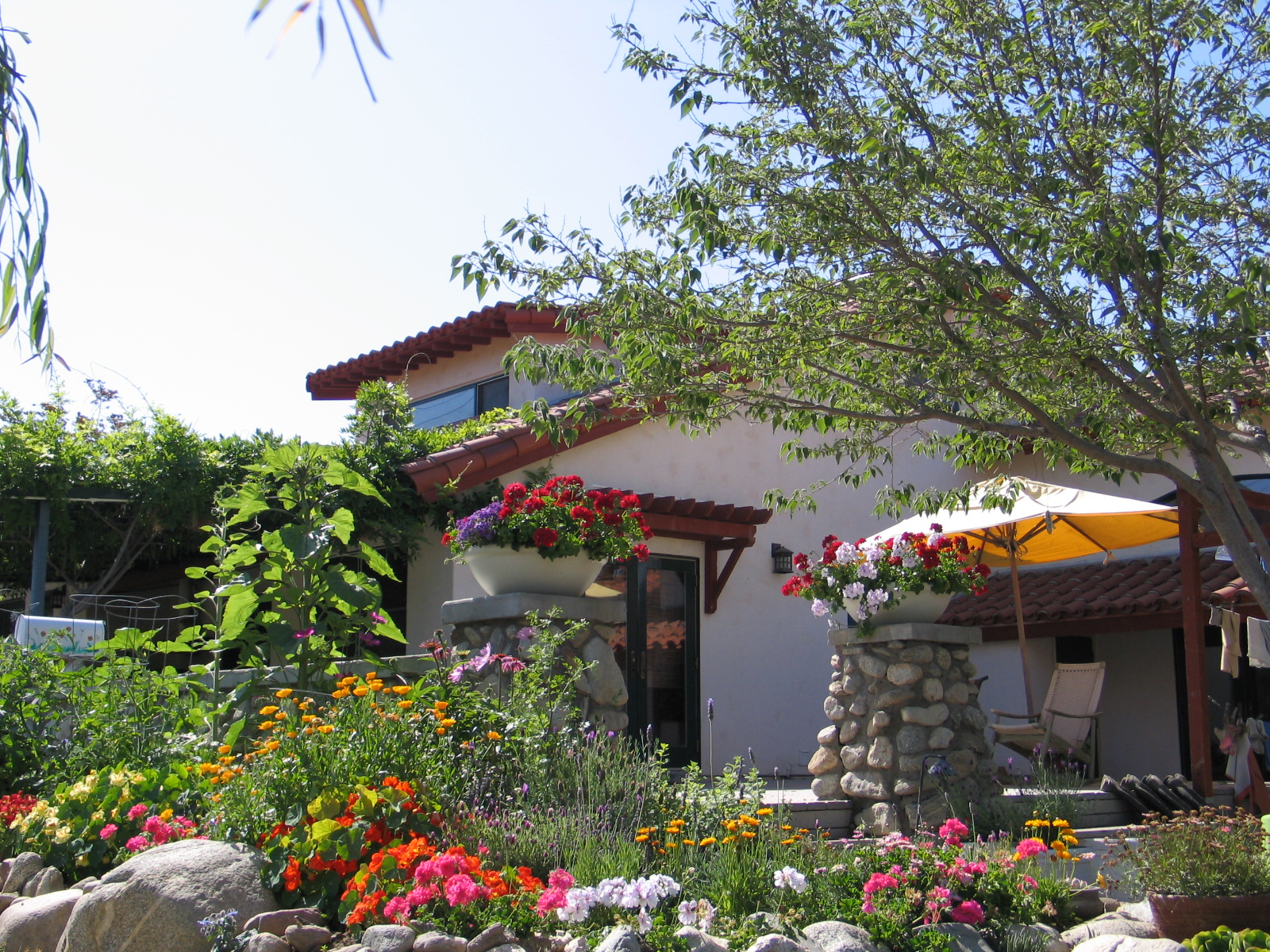Soil Health and Companion Planting
SOIL HEALTH and COMPANION PLANTING
Building Soil Fertility on the Living Water Farm
Redwood trunk slices: Retain soil moisture and contain nutrients in root-available layers.
Mulch: Vital for topsoil moisture retention, carbon loading, micronutrient input, and protection of seedling roots from sun damage
Legumes: Fix atmospheric nitrogen into the soil in plant-available form that other crops can utilize. Pole beans (among other beans) are the legumes of choice for the LWF
Compost: 1:5 blend of green waste compost and sifted topsoil, creating a nutritionally-balanced loam ideal for most traditional crops and trees.
Maintaining Soil Fertility
Chicken Manure: Where legumes are not present or cannot supply adequate soil nitrogen, chicken manure helps make up the difference. We place green waste in our chicken coop as bedding then periodically clear out all topsoil and waste for composting. This process allows for the utilization of nutrient-rich chicken manure to further maintain soil health, along with contributing additional phosphorous and potassium.
|
||||||||||||||||
Companion Planting
The act of planting selected crops in close proximity to one another, creating insect barriers, deterring gopher invasion, and reducing fungal pathogens. Certain companion species will attract beneficial insects that pollinate surrounding plants with fewer pollen-rich flowers.
Other benefits include:
– Nutrient exchange via mychorrizal interactions between species
– Increased drought resistance due to shading effects
– Soil-water retention and redistribution in certain vascular plants as related to cohesion-tension theory (Leffler et al. 2005, Hydraulic redistribution through the root systems of senesced plants, Ecology, 86, 633-642)
Successful companion planting arrangements in the LWF:
- Tomatoes and Garlic: Garlic repels insects and gophers. Tomatoes hold soil moisture in the top layer.
- Roses and Oregano: Roses provide shade to oregano plant base and oregano reduces liklihood of fungal pathogens infecting rose leaves.
- Grapes, Rosemary, and Strawberries: Grapes provide shade, strawberries serve as groundcover, improving soil moisture retention, and rosemary repels rodents and insect attackers.
Intercropping
Planting different vegetable crops together in alternating patterns, we are able to space closer than monoculture systems would allow, creating a biodynamic community of organisms that reenforce one another.
Amending Soils
Some crops need additional nutrient inputs due to insufficient soil conditions in localized areas of the farm. There are several methods for amending this situation that fit within the constraints of permaculture:
– Increasing mulch around the base/stems of crops to further reduce sun damage and water losses
– Adding earthworms to poorly-aerated soils
– Placing compost around plant bases in a higher soil-to-compost ratio than normally used
– Cover crops are an option as well if soil N levels are low or carbon levels fall below acceptable thresholds

 Welcome to the Myra House Holistic Living Center -
Welcome to the Myra House Holistic Living Center -
